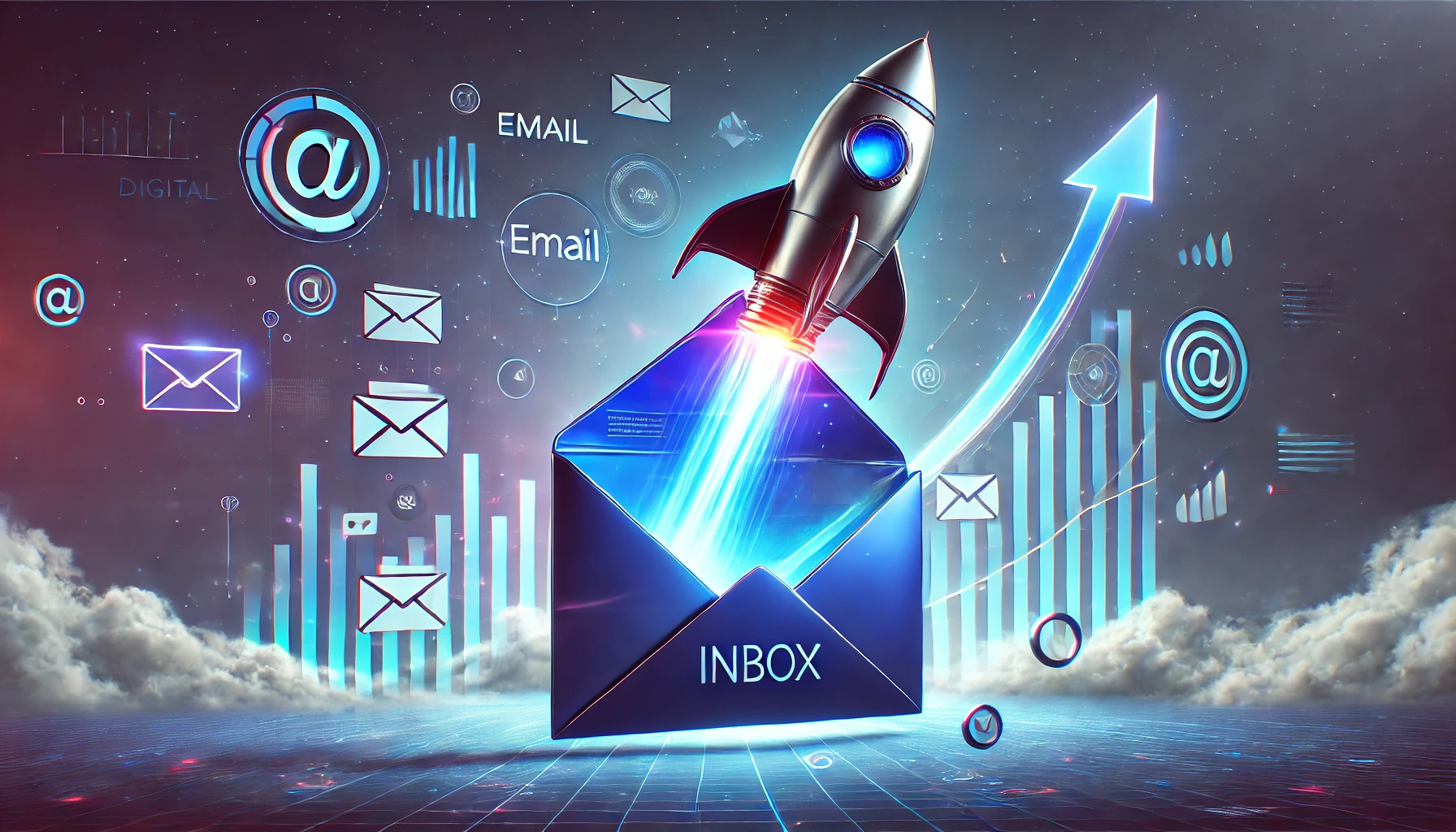I. Introduction
Picture this: You’ve spent weeks, months, or maybe even years honing your email marketing strategy. You’ve built a solid subscriber list, created thoughtful content, and seen decent conversion rates. Now you sense it’s time to take things up a level. You want more subscribers, more sales, and more impact. That’s where scaling comes in.
Scaling your email marketing isn’t just about sending out more emails. It’s about doing so in a way that preserves (and even enhances) the rapport you’ve built with your audience. It’s also about putting the right processes in place so growth doesn’t turn into chaos. In this article, we’ll explore the nuts and bolts of scaling, from laying a strong infrastructure to expanding your subscriber base through strategic partnerships and paid ads. We’ll show you how to harness automation without sacrificing personalization and how to track success metrics that will guide further growth.
By the end, you’ll have a solid roadmap for taking your email marketing to new heights, confidently and sustainably. Let’s dive in.
II. Understanding What Scaling Means in Email Marketing
A. Definition of Scaling
Scaling your email marketing means expanding your campaigns, subscriber base, and overall reach in a systematic way. Instead of just maintaining your current audience or dabbling in occasional promotions, you’re making growth a priority. This can involve running more campaigns, partnering with influential brands, or even branching into new niches.
But let’s be clear: scaling isn’t about being spammy or bombarding your list with daily emails. It’s about methodically increasing the scope of your email efforts while ensuring the experience remains positive for both you and your subscribers.
B. The Challenges of Scaling
Scaling is exciting, but it can lead to headaches if you rush into it. For instance, you might see a surge in subscribers and feel tempted to send more frequent emails. But if you’re not careful with segmentation, those extra emails might go to people who aren’t interested, leading to unsubscribes or spam complaints.
Another pitfall is ignoring personalization. The bigger your list gets, the easier it is to treat subscribers like numbers. That’s a fast track to lower engagement. True scaling involves processes that maintain that personal touch, even as your audience multiplies.
Ultimately, scaling calls for a mix of ambition and caution. Expand, but remember why people joined your list in the first place—to get relevant, helpful content.
III. Building a Scalable Email Marketing Infrastructure
If you want to grow, you need the right foundation. Think of it like constructing a skyscraper: without a sturdy base, adding more floors is risky.
A. Investing in the Right Tools
You probably started with a basic email service provider—maybe Mailchimp or ConvertKit. But as you scale, you’ll want platforms that offer robust automation, advanced segmentation, and CRM integrations.
- Email Platforms: ActiveCampaign, Klaviyo, or Drip can handle large subscriber lists and complex workflows. They often include powerful tagging and segmentation features.
- CRM Integration: Connecting your ESP (Email Service Provider) with a CRM system like HubSpot or Salesforce ensures all subscriber data is centralized. This helps you track leads across multiple channels.
- Automation Tools: Tools like Zapier or Integromat can link different apps, so new leads from a webinar platform or social media ad can automatically join the right list segment.
When you have tools that talk to each other, you avoid manual data entry and reduce errors. More importantly, you can create a seamless experience for subscribers, no matter how they first encounter your brand.
B. Streamlining Processes
Relying on ad-hoc tactics might be okay when your list is small. But once you scale, you’ll want standard procedures for everything from writing subject lines to scheduling campaigns.
- Templates: Have a few email templates ready—welcome emails, promotional layouts, newsletter formats. This way, you’re not reinventing the wheel each time.
- Content Calendar: Plan at least a month (or quarter) ahead. Knowing what topics you’ll cover and when promotional campaigns will launch helps you avoid last-minute scrambles.
- Standard Operating Procedures (SOPs): Document how tasks should be done. If you ever hire help or outsource certain processes, these SOPs become invaluable.
C. Segmenting Your Audience at Scale
As your list grows, painting all subscribers with the same brush doesn’t cut it. You need to break them into groups—by interests, behavior, purchase history, or demographics.
- Engaged vs. Inactive Users: Send re-engagement emails to the latter and keep the former excited with fresh content.
- Customers vs. Leads: People who already bought something from you may want advanced content or loyalty perks. Leads might need more introductory material.
- Regional Segmentation: If your audience spans multiple countries, you might send region-specific deals or mention local events.
By segmenting carefully, you deliver the right message to the right people. This not only improves engagement but also prevents unsubscribes caused by irrelevant content.
IV. Growing Your Subscriber Base
You can’t scale your email marketing without adding fresh leads. Yet, the approach you take to attract these leads can shape their long-term value. Aim for quality over sheer quantity.
A. Optimizing Lead Magnets
A compelling lead magnet can be the first step someone takes on their journey with you. Maybe it’s a PDF checklist, a short eBook, or a free mini-course.
- Diversify: Different segments might respond to different magnets. For example, advanced subscribers might crave in-depth whitepapers, while newbies prefer quick-start guides.
- Update Regularly: Keep lead magnets current and reflect any brand changes or new data.
- Promote Everywhere: Mention them in blog posts, social media bios, and even your email signature.
This simple approach—offering valuable freebies—still remains one of the most powerful ways to grow an email list.
B. Leveraging Paid Ads
Some might say organic growth is best. Yet, paid ads can speed up your momentum, especially when you have a proven funnel.
- Facebook and Instagram Ads: Target users who’ve shown interest in your niche. Drive them to a specific landing page that highlights your lead magnet.
- Google Ads: If you have valuable keyword insights, direct search traffic to an email signup page.
- Retargeting Campaigns: Show ads to people who visited your site but didn’t subscribe. A gentle reminder can sometimes seal the deal.
Paid ads can eat up your budget if you’re not careful, so always track your cost per lead. Stop or tweak campaigns that aren’t delivering. Double down on ones that yield good subscribers.
C. Partnerships and Collaborations
Teaming up with like-minded brands or influencers can open doors to audiences you’d never reach on your own. This might involve:
- Guest Blogging: Write for a popular site, then direct readers to your own signup page.
- Webinar Collaborations: Co-host an event. Each host invites their audience, leading to cross-pollination of subscriber lists (with permission, of course).
- Co-Branded Lead Magnets: Combine expertise to create a resource that appeals to both audiences.
Partnerships work best when both parties share a similar ethos and target market. The synergy should feel natural, not forced.
D. Referral Programs
Why not let your subscribers help you grow? A referral program incentivizes them to spread the word.
- Example: “Refer a friend, and you each get 10% off your next purchase.”
- Exclusive Perks: Offer early access to new products or premium content for frequent referrers.
Referral programs thrive on simplicity. Make the reward clear, the referral process painless, and your subscribers might just become your best marketers.
V. Enhancing Content and Engagement at Scale
As you gain more subscribers, the stakes get higher. You’re reaching a diverse crowd, and you want them all to feel valued.
A. Advanced Personalization
We’re past the days of “Hello, [First Name]” being enough. Advanced personalization uses data you’ve collected—like purchase history, browsing behavior, or location—to show each subscriber the content most relevant to them.
- Dynamic Content: Display a particular section of an email only to people who meet certain criteria. For instance, you might mention local meet-ups only to subscribers who live within driving distance.
- Special Offers: Offer discounts or recommendations tied to previous purchases or sign-ups.
Personalization can lead to bigger lifts in open rates, click-throughs, and, ultimately, conversions. It also signals that you care about subscriber preferences.
B. Leveraging Behavioral Data
Behavioral data covers any action your subscribers take, whether it’s clicking a link, downloading a whitepaper, or abandoning a cart.
- Trigger-Based Emails: If someone clicks a link for your premium course but doesn’t buy, you might send a follow-up that highlights success stories from actual students.
- Progressive Profiling: Over time, gather more information about subscribers. Use short surveys or polls to learn about their biggest struggles, then respond with targeted help.
When your email content reflects recent subscriber actions, people feel you’re in tune with them. It’s a great way to deepen trust.
C. Interactive Email Content
Interactive elements not only boost engagement but also provide insight. Think about adding polls, quizzes, or mini-surveys directly within your emails.
- Quick Polls: “What’s your biggest challenge right now?” with clickable options.
- Adaptive Quizzes: For instance, if you offer fitness solutions, a short quiz can steer subscribers toward the workout plan that suits them best.
These features spark curiosity. People who interact with them are likely to keep reading your emails in the future, because they see you’re not just blasting generic messages.
VI. Using Automation to Scale Without Losing the Personal Touch
Automation can be a blessing when you have thousands of subscribers, but it can also risk making emails feel robotic if done poorly.
A. Designing Advanced Workflows
We’ve touched on automation in previous articles, but scaling demands more sophisticated workflows.
- Post-Purchase Sequences: After someone buys from you (or through your affiliate link), they could receive a series of emails: a thank-you, a user guide, then a pitch for a complementary product.
- Cart Abandonment: If you sell products, an abandoned cart sequence can recover sales that might otherwise be lost. Use friendly reminders, offer help if they have questions, and possibly add a discount in the final reminder.
- Event-Based Campaigns: Birthdays, sign-up anniversaries, or membership renewal dates can all trigger special messages. It’s a fun way to keep relationships personal.
B. Testing and Optimizing Automation
Even the best workflow can go stale if you never reevaluate it. Keep an eye on your metrics:
- Open and Click Rates: If they drop, look for bottlenecks. Maybe your subject lines need a refresh, or the CTA is buried.
- Timing: Are you sending too many emails too quickly? Or are you waiting so long that your subscribers forget who you are?
- Conversion Data: For affiliate marketers, the ultimate test is whether your automated sequence leads to sales.
A/B testing parts of your workflow—like email #2 in a five-email welcome sequence—can reveal small tweaks that lead to big improvements.
C. Balancing Automation with Personalization
Subscribers value authenticity. If every email feels like a cookie-cutter script, you’ll lose that human connection.
One workaround is mixing automated messages with “broadcast” emails that mention timely events, personal anecdotes, or newly released products. Also, ensure your automated emails include touches like personal pronouns, references to a user’s specific actions (e.g., “I noticed you downloaded our guide on SEO…”), and a conversational tone.
VII. Measuring and Scaling Success
As you scale, you’ll want to keep a close eye on your metrics to ensure growth doesn’t compromise quality.
A. Establishing Key Performance Indicators (KPIs)
Some standard KPIs for scaled email operations include:
- Subscriber Growth Rate: The percentage increase in your list over a set time.
- Engagement Rates: Open rates, click-through rates, conversion rates.
- Revenue Per Email: For each email sent, how much revenue do you generate?
Define these KPIs early. They act like the dials on your dashboard, letting you spot issues quickly.
B. Scaling Campaigns Based on Data
When you see a campaign or workflow outperforming others, think about replicating or expanding it.
- Replicate Top Performers: If an educational mini-series gets fantastic engagement, create a similar series for another topic.
- Iterate on Weak Areas: If a certain segment rarely clicks, investigate why. Maybe your offers don’t match their interests.
- Experiment with Fresh Segments: If your main niche is “beginner-level marketing,” you could branch into “intermediate-level marketing” to capture a growing audience.
C. Advanced Reporting Tools
At scale, your basic ESP dashboard might not be enough. Tools like Google Analytics or HubSpot can track subscriber behavior on your website as well, giving you a bigger picture.
- Long-Term Trends: Don’t get hung up on one-off campaigns. Look at patterns over months or quarters.
- Cross-Channel Insights: Integrate social media and paid ads data to see how they feed into your email funnel.
VIII. Call to Action
Scaling can feel overwhelming, but it’s often just a matter of taking the next logical step. Here’s a simple challenge:
- Pick One System to Improve: Maybe it’s your lead magnet strategy or your referral program.
- Set a Measurable Goal: For example, “Grow my list by 15% in the next 60 days.”
- Map Out Required Tasks: Whether it’s contacting potential partners, setting up a new ad campaign, or launching a re-engagement sequence.
- Review Results Weekly: Keep an eye on your metrics so you can tweak and optimize on the fly.
Small steps, done repeatedly, add up to significant change. Give it a try.
IX. Teaser for the Next Article
Curious about the pitfalls that can derail your carefully scaled operations? In Article #8: Common Email Marketing Mistakes and How to Avoid Them, we’ll explore frequent missteps—from over-sending to ignoring deliverability best practices—and show you how to steer clear of them. Stay tuned, because avoiding these errors is often the difference between sustained growth and sudden setbacks.
X. Conclusion
Scaling your email marketing is like watching a plant grow from a small seed into a thriving tree. The stronger your roots—tools, processes, segments—the more gracefully you can expand. Yet, growth demands constant vigilance. You need to watch for signs of overreach, such as rising unsubscribe rates or dropping click-through rates. You also have to maintain that personal spark that won your subscribers over in the first place.
Invest in platforms that can handle complex workflows. Create crystal-clear SOPs so you or your team can execute tasks at scale without confusion. Expand your subscriber base thoughtfully, leveraging targeted ads, collaborations, and referral incentives. Keep your content dynamic and personalized, not dull and generic.
Above all, watch your metrics. The data reveals when you’re pushing too hard or not hard enough. It also shines a light on hidden opportunities you might otherwise miss. Embrace a mindset of continual improvement. Try new lead magnets, test fresh personalization approaches, and refine your automation sequences.
When done right, scaling doesn’t mean sacrificing quality. On the contrary, it can amplify your message and help more people benefit from your expertise. It’s a chance to solidify your brand’s reputation and become a trusted voice in your niche. So go forth, map your growth plan, and watch your email marketing evolve into a powerful, sustainable engine for your business.


